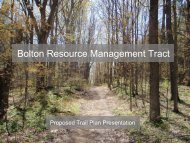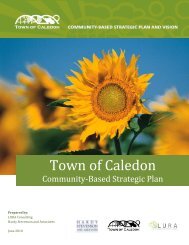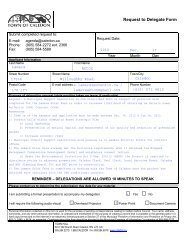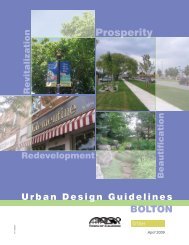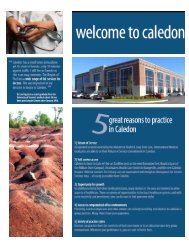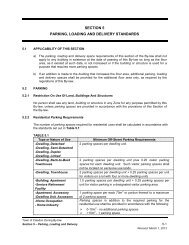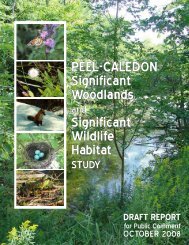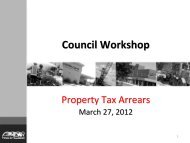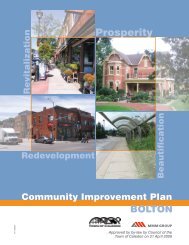Rockside Cultural Heritage Landscape Study - Town of Caledon
Rockside Cultural Heritage Landscape Study - Town of Caledon
Rockside Cultural Heritage Landscape Study - Town of Caledon
Create successful ePaper yourself
Turn your PDF publications into a flip-book with our unique Google optimized e-Paper software.
Community<br />
<strong>Rockside</strong> <strong>Cultural</strong> <strong>Heritage</strong> <strong>Landscape</strong> <strong>Study</strong><br />
<strong>Town</strong> <strong>of</strong> <strong>Caledon</strong><br />
community to well into the 20 th century. Gaelic continued to be spoken here until<br />
World War 1 23 . This area, which came to be known as <strong>Rockside</strong> (also a hamlet on the<br />
Island <strong>of</strong> Islay), has always been identified with those first settlers who locally achieved<br />
notoriety as the <strong>Rockside</strong> Pioneers.<br />
The Scots who settled <strong>Rockside</strong> were almost all <strong>of</strong> Presbyterian background and many,<br />
notably the former teacher, John Crichton, carried with them as well a belief in the<br />
importance <strong>of</strong> education. By the early 1830s a log building had been erected to act as a<br />
school and church following the organization <strong>of</strong> the Presbyterian congregation <strong>of</strong> West<br />
<strong>Caledon</strong> in 1831. It appears to have been located on the east side <strong>of</strong> Mississauga Road in<br />
close proximity to the extant c. 1890 stone schoolhouse. Prior to that time services had<br />
been held at the home <strong>of</strong> John Macdonald. With the formal establishment <strong>of</strong> a<br />
Presbyterian congregation Duncan Macmillan, a minister, who like many <strong>of</strong> his new<br />
flock, also was from Argyllshire and could preach in Gaelic as well as English, was<br />
inducted.<br />
In 1835 a plot was procured from Daniel McLachlan for the construction <strong>of</strong> a church and<br />
for use as a burying ground. In 1837 the timber framed ‘White Church’ (later the Melville<br />
Church, <strong>Rockside</strong>) was built by Daniel McMillan <strong>of</strong> Erin and served the community until<br />
1964 24 . The church has undergone restoration in recent years, and is being used for<br />
special events such as weddings.<br />
The cemetery contains the monuments <strong>of</strong><br />
many <strong>of</strong> the <strong>Rockside</strong> Pioneers dating<br />
back to the earliest burials in the<br />
community, and including much <strong>of</strong> the<br />
Kirkwood family. It is still being used for<br />
interments. The site has become the focus<br />
for reunions <strong>of</strong> former <strong>Rockside</strong>rs.<br />
The other church within the community<br />
stood at Greenlaw Corners (now<br />
Mississauga Road and The Grange<br />
Sideroad) and was known as the Union or<br />
Congregational Church. While it Melville Church and Cemetery<br />
originally also had a burying ground and<br />
parsonage, by 1900 it had fallen into disuse with many <strong>of</strong> the members joining the<br />
Melville Church. Greenlaw also appears to have included a smithy and Temperance Hall<br />
c. 1875.<br />
23 Interview with Lorraine and Rod Symmes.<br />
24 Berniece Trimble, Belfountain Caves, Castles and Quarries. (Erin: Herrington Printing, 1975),pp.103-107.<br />
17




